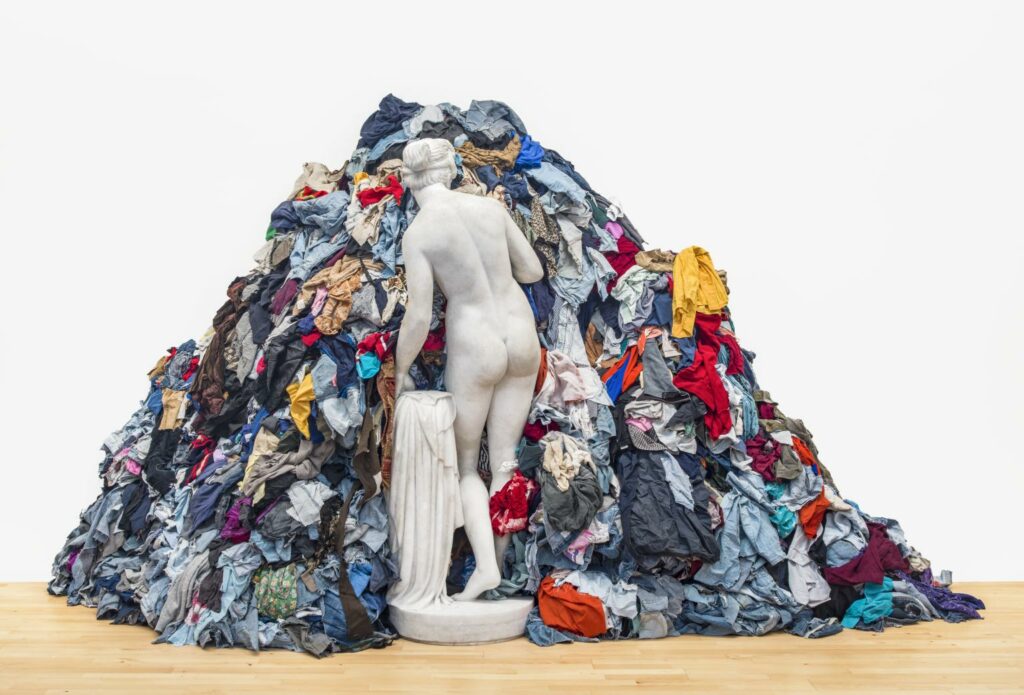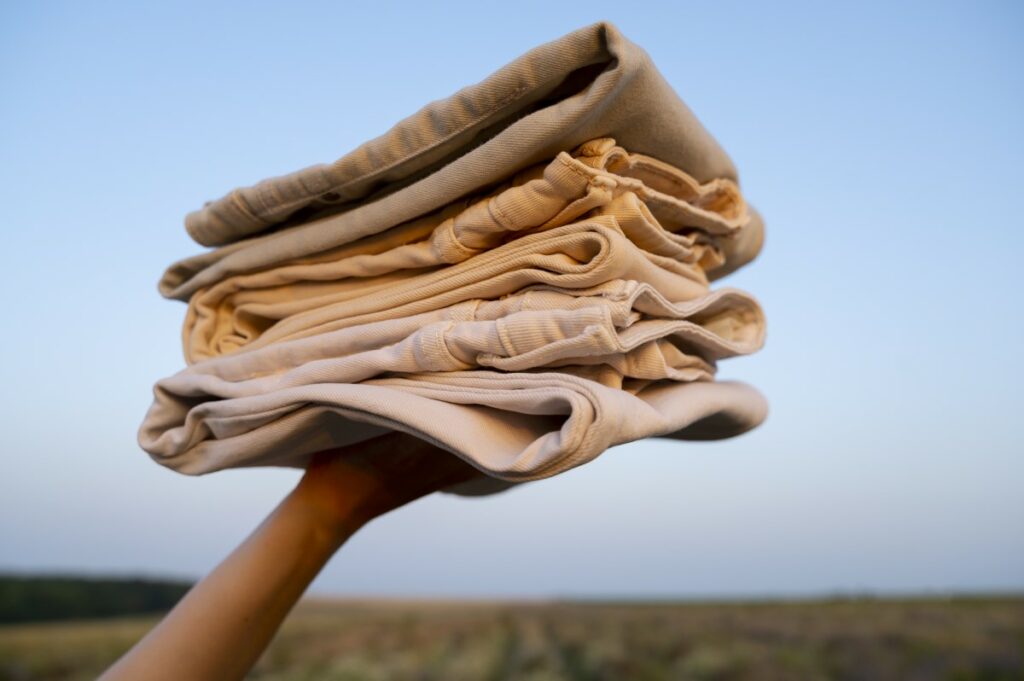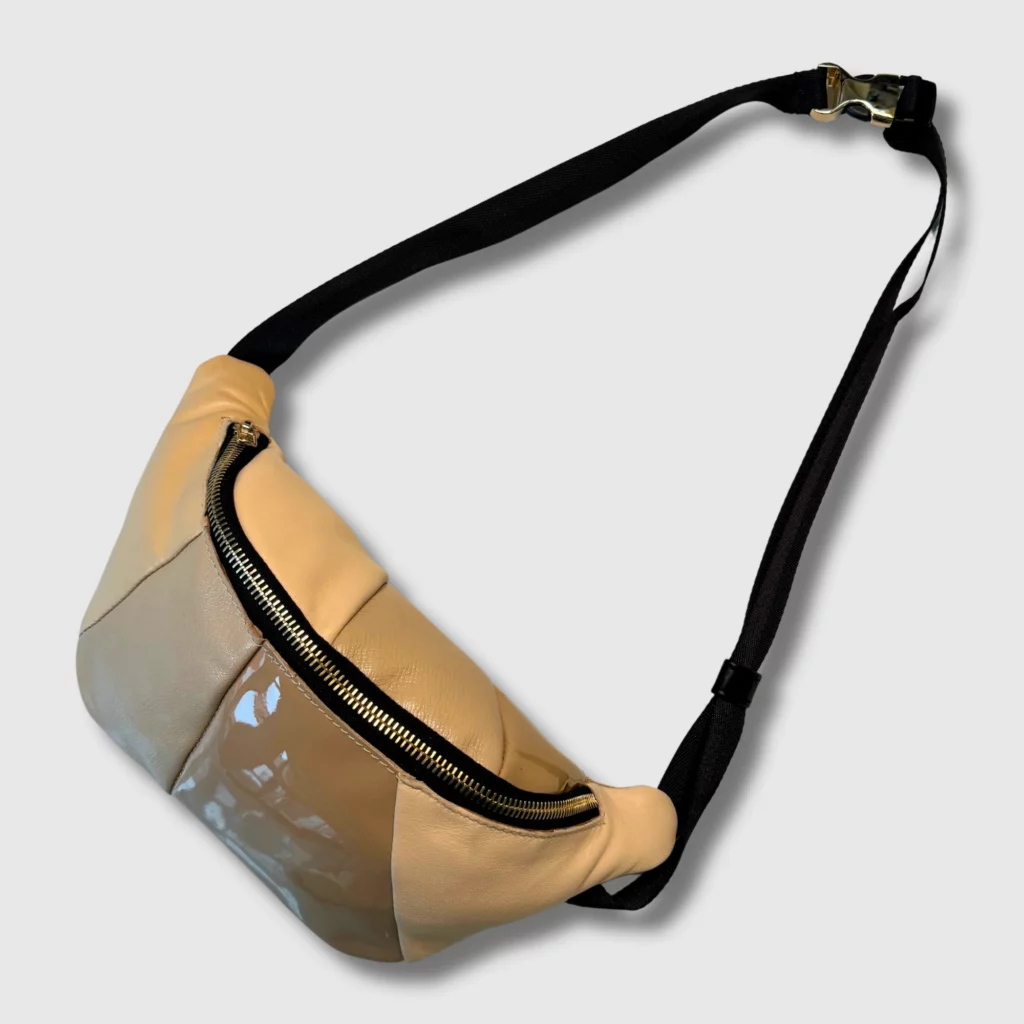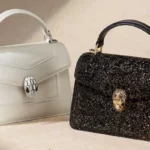
In recent years, the fashion industry has faced increasing scrutiny over its environmental impact and contribution to global waste. Amidst growing concerns, terms like “sustainability” and “eco-friendly fashion” have become buzzwords, prompting both consumers and industry insiders to seek alternatives that are kinder to the planet. Surprisingly, reports indicate that less than 1% of the material utilized in clothing production is recycled into new garments. One such sustainable alternative now gaining traction in the textile industry is the use of the sustainable option of deadstock fabric. This article aims to delve deeply into the concept of the sustainable option and choice of deadstock fabric, exploring its significance, benefits, challenges, and role in fostering a more sustainable fashion industry.
What is Deadstock Fabric?
Deadstock fabric refers to a surplus stock fabric or leftover fabric that remains unused after the completion of a production run. In the fast-paced world of garments, textiles, and fashion manufacturing, it’s not uncommon for factories to overestimate the amount of fabric needed for a particular order. This surplus of unused excess fabric, often stored in warehouses or factories, is what constitutes headstock.

Origins of the Term “Deadstock”
The term “deadstock” originated from the business world, where it typically refers to inventory that hasn’t been sold and is no longer in demand. In the context of fashion, deadstock fabric shares a similar connotation to waste fabric – it’s a fabric that hasn’t been utilized in production and is considered surplus or leftover. The term deadstock highlights the idle nature of these materials, or fabric mills which have excess materials that, if not repurposed, could end up as waste.
What is Deadstock Fabric for Sustainability
Deadstock fabric plays a crucial role in advancing sustainability within fabrics and sustainable fabrics in the fashion and textile industry, for several reasons:
- Waste Reduction: By repurposing deadstock fabrics, designers and manufacturers can reduce the amount of textile waste generated during the production process. Textile waste is a significant issue globally, with millions of tons ending up in landfills each year. Utilizing deadstock fabric helps divert these materials from disposal sites, contributing to waste reduction efforts.
- Resource Conservation: The production of textiles requires vast amounts of resources, including water, energy, and raw materials. By using deadstock fabric instead of sourcing new materials, the demand for these resources is minimized, leading to conservation benefits. Additionally, deadstock fabric doesn’t require the extraction of new raw materials, further reducing the environmental footprint associated with textile production.
- Lower Carbon Footprint: The environmental impact of textile production extends beyond resource consumption to include greenhouse gas emissions. By utilizing deadstock fabric, which has already undergone manufacturing processes, designers can significantly reduce the carbon footprint of their products. This is because the production of new fabric involves energy-intensive processes such as spinning, weaving, and dyeing, all of which contribute to emissions.
- Economic Opportunities: From an economic perspective, deadstock fabric presents opportunities for cost savings. Since deadstock fabric is often sold at discounted prices, designers and brands can reduce their production costs without compromising on quality. This cost-effectiveness makes sustainable fashion more accessible to a wider audience, thereby driving market demand for eco-friendly alternatives.

Challenges and Limitations of Deadstock Fabrics
Despite its benefits, deadstock fabric usage faces several challenges and limitations:
- Limited Availability: Deadstock fabric is by definition limited in quantity and availability. While surplus materials exist, they may not always align with the specific needs or preferences of designers. This limited availability can pose challenges in sourcing leftover fabric for large-scale production runs or specialized projects.
- Quality and Consistency: The quality and consistency of leftover fabric can vary depending on factors such as fabric type, age, and storage conditions. Designers may encounter inconsistencies in color, texture, or fabric weight, which can affect the overall quality of the finished product. Ensuring consistent quality standards while working with deadstock fabric requires careful selection and inspection of materials.
- Design Constraints: Designing with leftover fabric requires flexibility and adaptability due to its limited availability and irregularities. Designers may need to adjust their creative vision or design process to accommodate the constraints of working with surplus materials. While deadstock fabric encourages creativity and innovation, it also imposes certain limitations on design possibilities.
- Ethical Considerations: While deadstock fabric helps reduce waste and environmental impact, its use does not necessarily address broader ethical concerns within the fashion industry, such as labor rights and working conditions. Designers and brands must consider the social implications of their sourcing practices, ensuring that their commitment to sustainability extends beyond material choices to encompass ethical production standards.
Promoting Deadstock Fabric Adoption in Fashion Industry
To encourage wider adoption of fabrics half the quality of deadstock fabric within the fashion industry, several strategies can be employed:
- Education and Awareness: Increasing awareness about the environmental and economic benefits of deadstock fabric is crucial in promoting its adoption. Educating designers, manufacturers, and consumers about the concept of leftover fabric and its role in sustainability can help shift perceptions and behaviors towards more eco-friendly practices.
- Collaboration and Partnerships: Collaboration between designers, manufacturers, and fabric suppliers can facilitate the identification and utilization of deadstock materials. By forging partnerships with suppliers who specialize in leftover fabric, designers can gain access to a diverse range of surplus materials while supporting sustainable sourcing practices.
- Innovation and Technology: Advancements in technology, such as digital platforms and inventory management systems, can streamline the process of sourcing and purchasing deadstock fabric. Online marketplaces dedicated to surplus materials enable designers to browse and purchase deadstock fabric from various suppliers, expanding their options and facilitating more sustainable sourcing practices.
- Policy Support: Government policies and regulations can play a significant role in incentivizing the use of deadstock fabric and promoting sustainable practices within the fashion industry. Measures such as tax incentives for businesses that prioritize sustainability or requirements for transparency in supply chains can encourage greater adoption of eco-friendly materials like leftover fabric.
Case Studies and Success Stories
Several fashion brands and fashion designers themselves have successfully integrated deadstock fabric into their collections, demonstrating its feasibility and impact on fashion designers:
Reformation
Reformation, a renowned sustainable fashion brand, has pioneered the use of deadstock fabric in its production processes. Leveraging deadstock materials sourced from textile mills and garment factories, Reformation has successfully integrated sustainability into its business model while promoting creativity and innovation in design.

By repurposing surplus fabric that would otherwise go to waste, Reformation Deadstock not only minimizes environmental impact but also offers unique, limited-edition pieces to consumers. Through transparent supply chain practices and a commitment to ethical manufacturing, Reformation has set a precedent for sustainable fashion, demonstrating that eco-consciousness can go hand in hand with style and profitability.
Zero Waste Daniel
Designer Daniel Silverstein of Zero Waste Daniel specializes in creating clothing from pre-consumer textile waste, including deadstock fabric. They committed to revolutionizing the traditional fashion industry through sustainable practices. Embracing the principles of circularity and eco-consciousness, Zero Waste Daniel employs innovative techniques to repurpose fabric scraps and discarded materials, crafting them into stylish and unique garments.

By prioritizing resourcefulness and creativity, the brand not only reduces its carbon footprint but also inspires consumers to reconsider their consumption habits and their relationship with clothing. Through its dedication to sustainability and ingenuity, Zero Waste Daniel sets a remarkable example for the fashion industry, showcasing the potential for fashion to become a catalyst for positive environmental change.
Mara Hoffman
Mara Hoffman incorporates deadstock fabric into its collections as part of its broader sustainability initiatives. Through her eponymous clothing brand, Hoffman has spearheaded numerous initiatives aimed at reducing environmental impact and promoting social responsibility within the fashion industry.
Hoffman’s dedication to sustainability is evident throughout her brand’s operations, from sourcing eco-friendly materials to implementing fair labor practices. She prioritizes transparency and accountability, ensuring that consumers are aware of the ethical considerations behind each garment. One of Mara Hoffman’s notable sustainability initiatives is her use of recycled and organic fabrics in her collections. By repurposing materials and minimizing waste, she demonstrates a commitment to circularity and resource conservation.

Furthermore, Hoffman actively engages with environmental and social justice causes, using her platform to advocate for positive change. Through collaborations with like-minded organizations and initiatives, she amplifies her impact and inspires others to join the movement towards a more sustainable fashion industry.
Future Outlook and Recommendations to Reduce Textile Waste
As the fashion and textiles industry continues to grapple with sustainability challenges, the use of deadstock fabric represents a promising opportunity to drive positive change. To maximize its potential impact, stakeholders across the textiles supply chain must collaborate and take concerted action to address the challenges associated with leftover fabric utilization and more sustainable alternative deadstock fabrics. Some key recommendations include:
- Promoting Collaboration: Collaboration among designers, manufacturers, suppliers, and consumers is essential to overcome challenges related to leftover fabric utilization, such as limited availability and supply chain transparency. By working together, stakeholders can identify innovative solutions and best practices to maximize the value of such a fabric.
- Investing in Technology: Leveraging technology such as blockchain, product lifecycle management and digital platforms can enhance transparency and traceability in the deadstock fabric supply chain, enabling stakeholders to track the origin, production, and distribution of materials more effectively.
- Educating Consumers: Educating consumers about the benefits of leftover fabric and the importance of sustainable fashion practices is crucial to fostering acceptance and demand for eco-friendly products. Brands can use marketing and communication strategies to highlight their use of deadstock fabric and engage consumers in sustainability initiatives.
- Supporting Circular Economy Models: Embracing circular economy principles, such as recycling and upcycling, can further enhance the sustainability of leftover fabric utilization. By designing products with longevity and recyclability in mind, stakeholders can minimize waste and maximize resource efficiency throughout the product lifecycle.
Conclusion
Deadstock recycled fabric represents a promising solution to the environmental challenges facing recycled materials in the fashion industry. By repurposing deadstock materials and reducing waste, leftover fabric contributes to sustainability efforts while offering economic benefits and fostering creativity within the fashion community. While challenges and limitations to leftover fabric sustainable exist, ongoing efforts to promote awareness, collaboration, and innovation can drive wider adoption of leftover fabric and pave the way for a more sustainable future for recycled materials in fashion.
In summary, using deadstock fabric is not just a leftover material from garment production; it’s a symbol of opportunity, creativity, and sustainability in the fashion industry. As consumers, designers clothing brands, fashion houses, and industry stakeholders, we have the power to embrace leftover fabric and support a more sustainable wardrobe and eco-friendly approach to fashion that benefits both people and the planet. Through collective action and conscious choices, we can redefine the way fashion is made and consumed, ensuring a brighter and more sustainable future for generations to come.





Leave a Reply